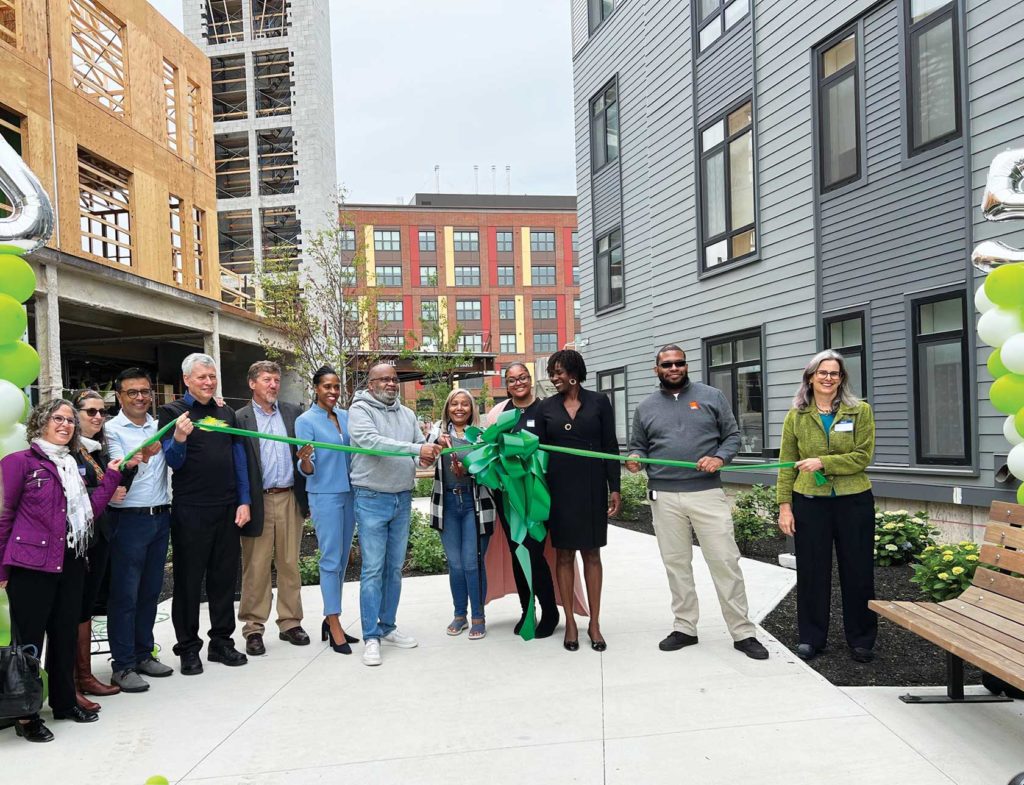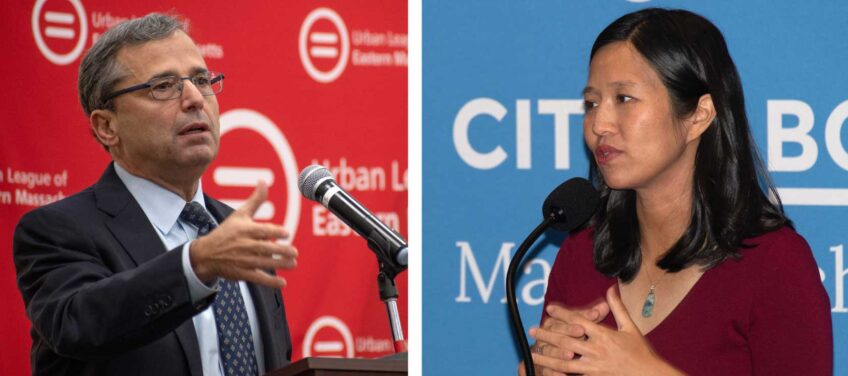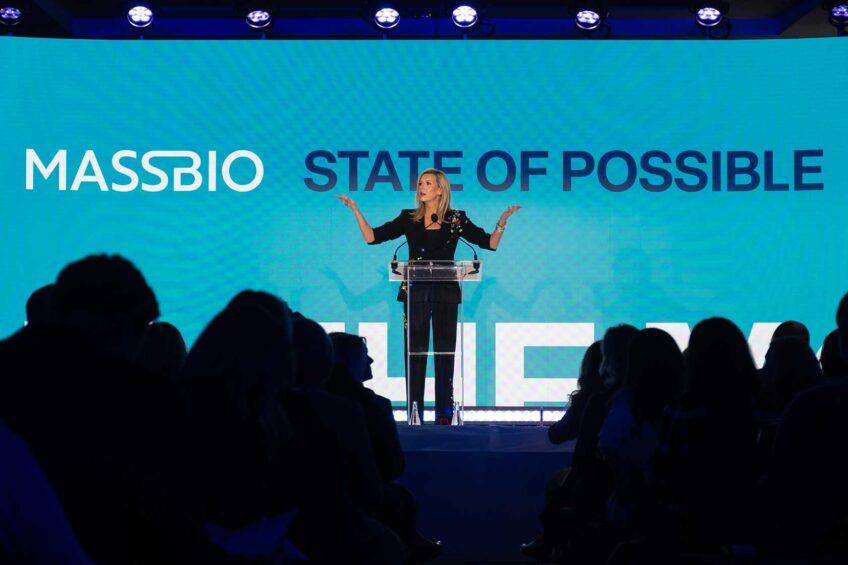New housing transforms Jackson Sq.
Affordable developments proliferate in area

Over the last two decades Jamaica Plain’s Jackson Square has seen major redevelopment with the addition of a supermarket, affordable housing and now a slew of new development on top of previously vacant lots in the neighborhood.
Most recently the Jamaica Plain Neighborhood Development Corporation (JPNDC) officially cut the ribbon on its 25 Amory Street Apartments, a 44 unit affordable apartment building a short distance from the nearby Jackson Square MBTA station. To celebrate the progress towards the city’s long-term vision for Jackson Square, residents, elected officials and development organizations came together to celebrate the grand opening of the building alongside two additional projects promising additional affordable housing soon to come.
The 44 apartments are available to households earning between below 80% of Area Median Income (AMI).
“Every time we put a key into the hands of a family that has been shut out of Boston’s housing market, we are thrilled — and inspired to do even more to keep Boston a place where everyone has the chance to live and thrive,” said JPNDC CEO Teronda Ellis.
The other projects — the Community Builders’ 250 Centre Street development that looks to create 76 new affordable homes, and Urban Edge’s 1599 Columbus Avenue development that will create 65 new affordable apartments in Jackson Square — are currently in progress and set to break ground this summer respectively.
The Centre Street build includes 110 new homes altogether — seven studio units, 69 one-bedroom units, 30 two-bedroom units and four three-bedroom units. Of the 110 units, 20 apartments will be marketed as affordable to households earning at or below 100 percent of AMI, 41 apartments affordable to households earning at or below 60 percent of AMI, and 15 apartments will be affordable to people making less than 30 percent of AMI.
Columbus Avenue plans to include 21 one-bedroom units, 36 two-bedroom units, and 9 three-bedroom units — 22 reserved for households who are experiencing homelessness or who require rental assistance whose income is up to 30% AMI or $32,200, 7 for households earning 50% AMI or $53,700 or below, and 43 units will be available to a two-person household earning less than 60% AMI or $64,440.
The three projects are among 26 new developments within a half-mile radius of the Jackson Square MBTA Station that are in progress or in the planning stages. According to the JPNDC, and city housing experts, the completion of the Amory Street development marks a significant milestone and signals long time coming progress with some projects being in the works since the late 1990s.
“In some ways, it really represents a perfect outcome,” said Sheila Dillon, Boston’s chief of Housing who said decades of funding issues and the development of a community input process have finally started to materialize in Jackson Square. “Maybe we gotta figure out how to do things quickly, but I really think that this demonstrates what can be done. It demonstrates the power of community and good planning.”
The projects being built in Jackson Square are developing the vacant lots left by the eight acres of neighborhood that had been bulldozed in preparation for construction of an eight-lane I-95 connector, then left vacant after a multi-neighborhood mobilization succeeded in halting the project in 1974.
In 2005, Jackson Square Partners — JPNDC, Urban Edge, The Community Builders and Hyde Square Task Force — was designated by the Boston Redevelopment Authority to redevelop the land.
“Jackson Square is a place everyone can call home,” agreed Andy Waxman, New England vice president of real estate development for The Community Builders. “We’re excited to work with JPNDC and Urban Edge to reknit Roxbury and Jamaica Plain back together with inclusive and equitable housing.”
As for how the development of Jackson Square fits in with the rest of the city’s affordable housing and neighborhood revitalization goals, Dillon said Boston officials will be looking towards its own vacant plots to be turned into new developments.
“A lot of this land that’s being developed was state owned, but we are looking at our city owned assets, for large scale development by good transit, that is going to be energy efficient and community led and community driven,” Dillon said. “As we create a lot of new affordable housing, I think [Jackson Square] demonstrates what can be done.”






